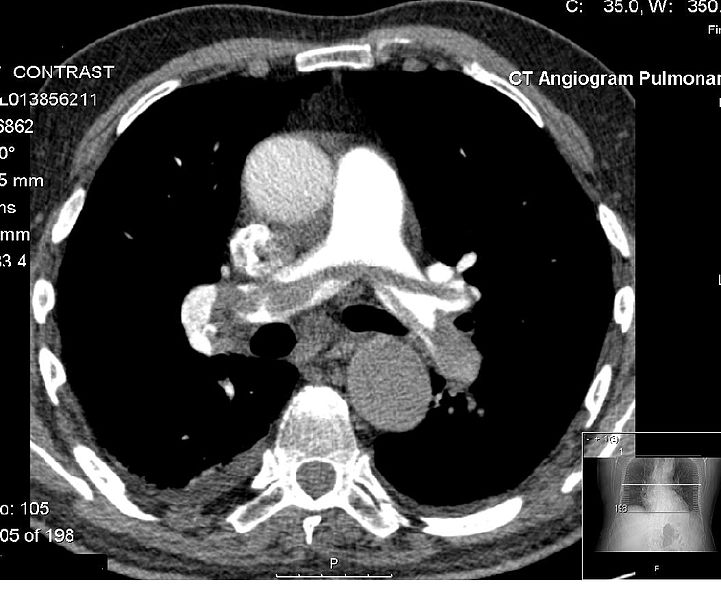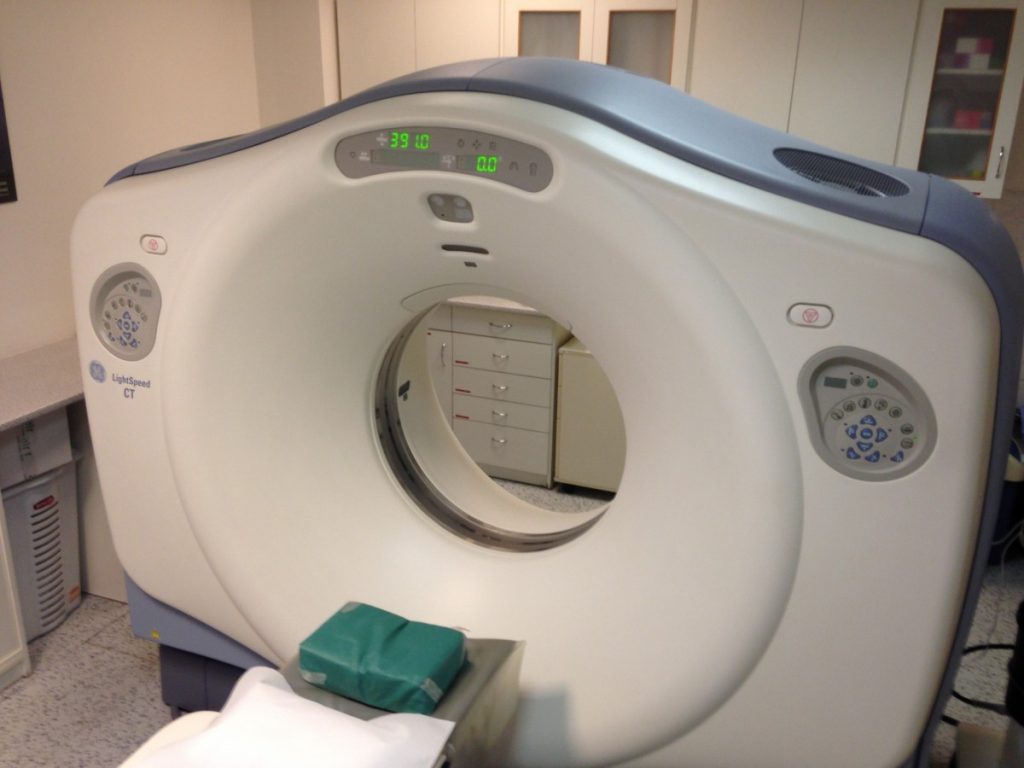The study compares 2 different methods of combined chemotherapy and radiotherapy for the treatment of localised lung cancer in patients not suitable for surgery.
Hypothesis(es) to be tested:
1) Vinorelbine + cisplatin + high-dose palliative radiotherapy is superior to gemcitabine + high dose palliative radiotherapy in terms of efficacy in a multi-institutional setting
2) Vinorelbine + cisplatin + high-dose palliative radiotherapy is superior to gemcitabine + high dose palliative radiotherapy in terms of feasibility in a multi-institutional setting
3) Vinorelbine + cisplatin + high-dose palliative radiotherapy has a favourable toxicity profile relative to gemcitabine + high-dose palliative radiotherapy
Official Title
A Randomised Phase II Study of Two Regimens of Palliative Chemoradiation Therapy in the Management of Locally Advanced Non Small Cell Lung Cancer
Conditions
Study Type
Interventional
Study Design
Treatment, Randomized, Open Label, Dose Comparison, Parallel Assignment, Safety/Efficacy Study A third of patients with non-small cell lung cancer (NSCLC) present with Stage IIIA or IIIB disease, which is not amenable to curative resection. Single modality local therapy, either surgery or radiation, only cures a fraction of such patients. Radical radiation is not feasible for all patients with unresectable Stage IIIA or IIIB non-small cell lung cancer, based upon the extent of the loco-regional disease or the medical state of the patient. Patients of good performance status receiving protracted high-dose palliative radiotherapy do obtain a survival benefit from this therapy. Studies have shown a survival advantage by adding chemotherapy to radical radiation therapy: but studies in the high-dose palliative radiotherapy setting are lacking. Two regimens of concurrent chemotherapy with high-dose palliative radiotherapy have been developed locally, with established MTDs. These 2 regimens do warrant a comparative assessment in a phase II trial, prior to a phase III trial against high dose palliative radiation alone (36Gy/12#/5). This is a randomised phase II trial comprising of 2 arms for randomization as follows:Arm A: External beam radiation, 40 Gy/20#/5 per week, Plus concurrent Vinorelbine, IV, 25mg/m2, days 1, 8, 22 and + Cisplatin 20mg/m2, IV, weeklyArm B: External beam radiation, 30 Gy/15#/5 per week, Plus concurrentGemcitabine, 200mg (flat dose) IV days 1, 8, 15An equal number of patients will be randomised to each arm. The randomisation will be carried out by the Princess Alexandra Trial Centre. Patients will be assessed at baseline, weekly during treatment, and then at 3 weeks, 6 weeks and 12 weeks post treatment then 3 monthly thereafter.
Further Details
Primary Outcomes: 1. Objective response rate (RECIST criteria); 2. Symptomatic response rate; 3. The feasibility (i.e. % of patients who cannot complete the planned RT dose or who require a break for toxicity) and problems encountered with protocol compliance in the setting of a multi-institutional TROG study; 4. Toxicity of both treatmentsSecondary Outcomes: 1. Progression-free survival; 2. QOL as assessed by FACT-L version 4.
Study Start
Dec 2003; Expected completion: July 2009; Last follow-up: Dec 2008; Data entry closure: June 2009
Eligibility & Criteria
Ages Eligible for Study: 18 Years and aboveGenders Eligible for Study: Both CriteriaInclusion Criteria:- Histologically or cytologically proven non-small cell lung cancer. – Planned high dose palliative radiation therapy for locoregional control. Examples include patients with:Stage I ÃÆÃâÃââÃÆââââ¬à ¡ÃâìÃÆââââ¬Å¡Ã¬Ãâ¦Ã¢â¬Å IIIB disease with disease technically unsuitable for radical therapy, or weight loss in excess of 10%, or concurrent medical illness Patients found to have a locally advanced thoracic disease suitable for radical therapy but on work up are found to have a FDG-PET only solitary metastasis. – All potential patients, prior to registration, must be reviewed at a multidisciplinary lung oncology meeting attended by medical oncologists, radiation oncologists and radiologists. – No prior radiotherapy or chemotherapy for non-small cell lung cancer. ECOG performance status 0, 1. – Adequate hepatic, bone marrow and renal function. – If patient is female of child bearing potential, she must not be pregnant or lactating. Males and females of reproductive potential must practise adequate contraception. – Written informed consent. Exclusion Criteria:- Patient unable to receive all therapy as an outpatient. – Significant medical conditions which in the opinion of the investigator would compromise the planned delivery of the chemotherapy and radiotherapy or which may be potentially exacerbated by these modalities. – History of any other cancer (except non-melanoma skin cancer or carcinoma in situ of the cervix) unless in complete remission and off all therapy for that cancer for at least 5 years. – Receiving treatment with another investigational agent.
Total Enrolment
80
Contact Details
Australia, New South WalesNewcastle Mater Misericordiae Hospital, Newcastle, New South Wales, 2298, Australia; Recruiting Kelly Crawford +61 (0) 2 4921 1468 kelly.crawford@mater.health.nsw.gov.au Jane Ludbrook, Principal InvestigatorAustralia, QueenslandEast Coast Cancer Centre, Tugun, Queensland, 4224, Australia; Not yet recruiting David Christie, FRANZCR +61 (0)7 55980366 dchristie@wesley.com.au David Christie, FRANZCR, Principal InvestigatorPrincess Alexandra Hospital, Brisbane, Queensland, 4102, Australia; Recruiting sharon Cox +61 (0)7 32402007 sharon_cox@health.qld.gov.au Bryan Burmeister, Principal InvestigatorMater Misericordiae Hospital, Brisbane, Queensland, 4101, Australia; Recruiting Adrienne See +61 7 3840 3281 Adrienne_See@health.qld.gov.au Townsville Base Hospital, Townsville, Queensland, 4810, Australia; Recruiting Danita Kapp +61 7 4796 1627 Danita_Kapp@health.qld.gov.au Australia, VictoriaPeter MacCallum Cancer Centre, Melbourne, Victoria, 8006, Australia; Recruiting Jo Hawking +61 3 96561111 Jo.Wong@petermac.org Michael Michael, Principal Investigator
All content and media on the HealthEngine Blog is created and published online for informational purposes only. It is not intended to be a substitute for professional medical advice and should not be relied on as health or personal advice. Always seek the guidance of your doctor or other qualified health professional with any questions you may have regarding your health or a medical condition. Never disregard the advice of a medical professional, or delay in seeking it because of something you have read on this Website. If you think you may have a medical emergency, call your doctor, go to the nearest hospital emergency department, or call the emergency services immediately.







